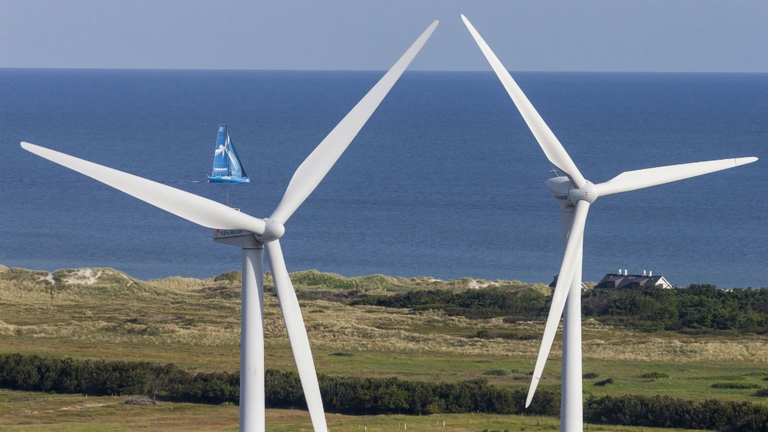https://www.lifegate.it/portogallo-energia-rinnovabile-record-2023
- |
- Portugal produced more renewable energy than its electricity needs for 149 hours straight last week:it's a record.
- The Lusitanian country boasts perfect geographical and climatic conditions for renewables, and has long implemented policies to exploit them.
- Italy would have similar potential, but in 2022 it imported 79.7 percent of the energy used, and is still tied to fossil fuels.
Portugal has achieved a new great achievement in the production of green energy.In the period between 31 October and 6 November, the Portuguese country produced more renewable energy than was necessary for its electricity needs for 149 consecutive hours, generating 1,102 gigawatt hours of electricity compared to the 840 consumed in the same period.This means that Portugal's renewable energy production has exceeded the energy needs of households and industry, saving energy equivalent to 262 gigawatt hours. Data confirms Portugal as one of the leading countries in Europe in the development of renewable energy, with exceptional results in the production and consumption of electricity from clean sources.
The record that belonged… to Portugal has been broken
Portugal had already set the record in 2019 Of 131 consecutive hours where the supply of green energy had exceeded demand.Over the past week, the country has once again outdone itself, setting two more significant records.For 131 more hours, renewable energy exceeded the needs of the whole National electricity system of Portugal, including pumping needs in hydroelectric basins, without the need to use conventional thermal generation sources such as natural gas combined cycle power plants.Furthermore, for 95 consecutive hours, renewable production exceeded consumption without the use of natural gas combined cycle power plants, even allowing Portugal to export electricity to Spain.
The records achieved certify once again that Portugal is rapidly following a sustainable path in the progressive incorporation of native renewable sources, guaranteeing at the same time security of supply and quality of service.An example that could and should be followed by Italy, which despite excellent potential continues to invest in gas.
The energy transition objectives
Portugal also has ambitious goals for the energy transition:aims to generate 85 percent of its electricity from renewable sources by 2030, retire all natural gas power plants by 2040 and become carbon neutral by 2045.

Portugal can count on considerable natural resources for renewable sources, such aswind, photovoltaic, hydroelectric and geothermal energy.The country's location, with a low latitude and overlooking the Atlantic, creates favorable conditions for both solar radiation and winds, making wind and photovoltaic sources of energy promising.Furthermore, Portugal has great potential for marine energy, particularly from waves, thanks to its famous coastal beaches.
As of October 2023, renewable energy has generated the 67 percent of the country's energy needs, mainly thanks to favorable conditions for hydroelectric and wind power.Only wind power reached a new all-time high, breaking the daily energy production record.
The merciless comparison with Italy
Renewable sources have already met 56 percent of Portugal's energy needs since the beginning of the year, with wind at 24 percent, hydroelectric at 18 percent, photovoltaic at 8 percent and biomass at 6 percent.Natural gas and fossil fuels accounted for 21 percent, while only the remaining 23 percent was imported from other countries.Despite being one of the countries experiencing a more complicated economic situation, Portugal is therefore demonstrating that it is still possible to achieve significant goals in the production of renewable energy.
To draw a parallel with Italy, which could boast starting conditions similar to those of Portugal for the use of renewables (apart from the view over the Atlantic) in 2022 according to data from the Ministry of the Environment and Energy Security The Our country imported 79.7 percent of its energy, and the mix used was composed of 37.6 percent natural gas, 35.7 percent oil and petroleum products, and only 18.5 percent from renewable sources.
